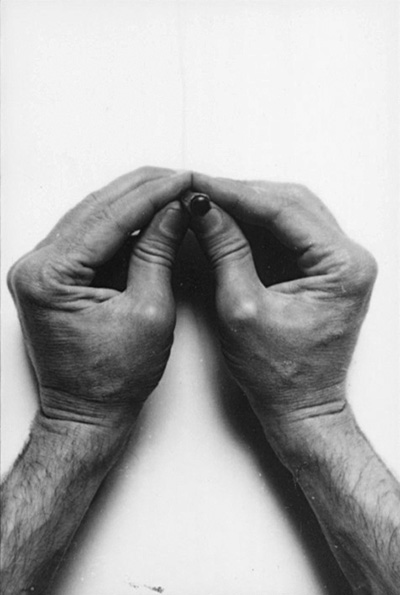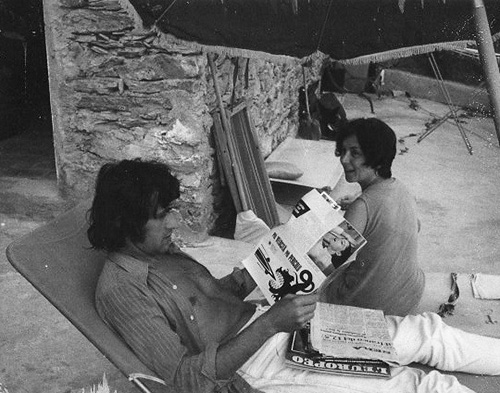1975
November 14, 20171977
November 14, 2017The magazine Studio International55 devoted the whole of its January–February issue to Italy. Titled Italian Art Now, it had an introductory essay by Achille Bonito Oliva (“Process, Concept and Behavior in Italian Art”) and contributions by Germano Celant, Annemarie Sauzeau Boetti, Barbara Radice, Caroline Tisdall and Luca Venturi. The artists chosen were presented with illustrated interviews or with four pages edited directly by each. Of Boetti’s pages, the first two (a photo and eight small drawings) were figures from the Insicuro noncurante portfolio.
The third page was titled “Classifying the Thousand Longest Rivers in the World, 1970–1974, a book by annemarie and alighiero boetti” and was a typed list of the one thousand names of rivers in order of decreasing length, with some corrections in pen. Finally, on the fourth page appeared a photograph of Estate 70, described as “summer 1970, a roll of paper 20 × 2 meters, self-adhesive dots in 4 colors.”
The portfolio Insicuro noncurante was presented in March at the Studio Marconi of Milan and in May at the Galleria D’Alessandro-Ferrante in Rome. Boetti then suggested that Giovan Battista Salerno should start work on an informative manual about the portfolio. Of the project, Salerno wrote: “From the start we planned to do an ‘informative manual’ together. What he hoped was to have a brief text ‘for each work’ which would be neither a critical reading nor just journalism nor yet information pure and simple, but all these things together. It should help its viewers to lose a little less time as they looked by dwelling on the aesthetic or purely formal side of the work. Because though this part was present and in fact striking, there were other things that at times suddenly clicked in the viewer’s mind but were not always so obvious, certain devices or codes…”.
Salerno also wrote the text presenting the portfolio in the bulletin Studio Marconi n° 5.
In October the exhibition “Prospect Retrospect, Europa 1946–1976” was held at the Kunsthalle in Düsseldorf. It was curated by Benjamin H.D. Buchloh, Rudy Fuchs, Conrad Fisher, John Matheson and Hans Strelow. Boetti was represented by recent works on squared paper.
A few days after Düsseldorf, the solo exhibition “quadrare diagonando. alighiero e boetti” opened in Brescia at Massimo Maninni’s Galleria Banco. “Quadrare diagonando” referred to a small drawing (which had already appeared in the portfolio Insicuro noncurante) printed on the invitation. It also appeared in one of the works on display among the thirty-six graphic symbols of Gli anni della mia vita.

Two hands a pencil, photo by Gianfranco Gorgoni
The Brescia exhibition marked an important stage in the development of Boetti’s art, presenting works which revealed an increasing complexity. This appeared in the parallel typologies of La notte da luce alla notte, a ballpoint pen from ’75, La metà e il doppio, a drawing in India ink on squared paper, and an Autodisporsi, both from ’74. On display was Prima e quarta di copertina, one of his first montages with tracings of cover designs. They looked ahead to the large series of images based on popular magazines, a recurrent theme in the eighties. Finally he designed a poster for the gallery using a sequence of black and white photos taken by Gianfranco Gorgoni in ’75, in which we see the arms and hands of the artist as he traces a pencil line on a sheet of paper. The image, subsequently titled Due mani, una matita, was also described by the artist himself as “Two limbs and a pencil.” Another similar shot by Gorgoni immediately became a pencil drawing, Senza titolo, which was the matrix for the whole sequence of works on paper Tra sé e sé.


